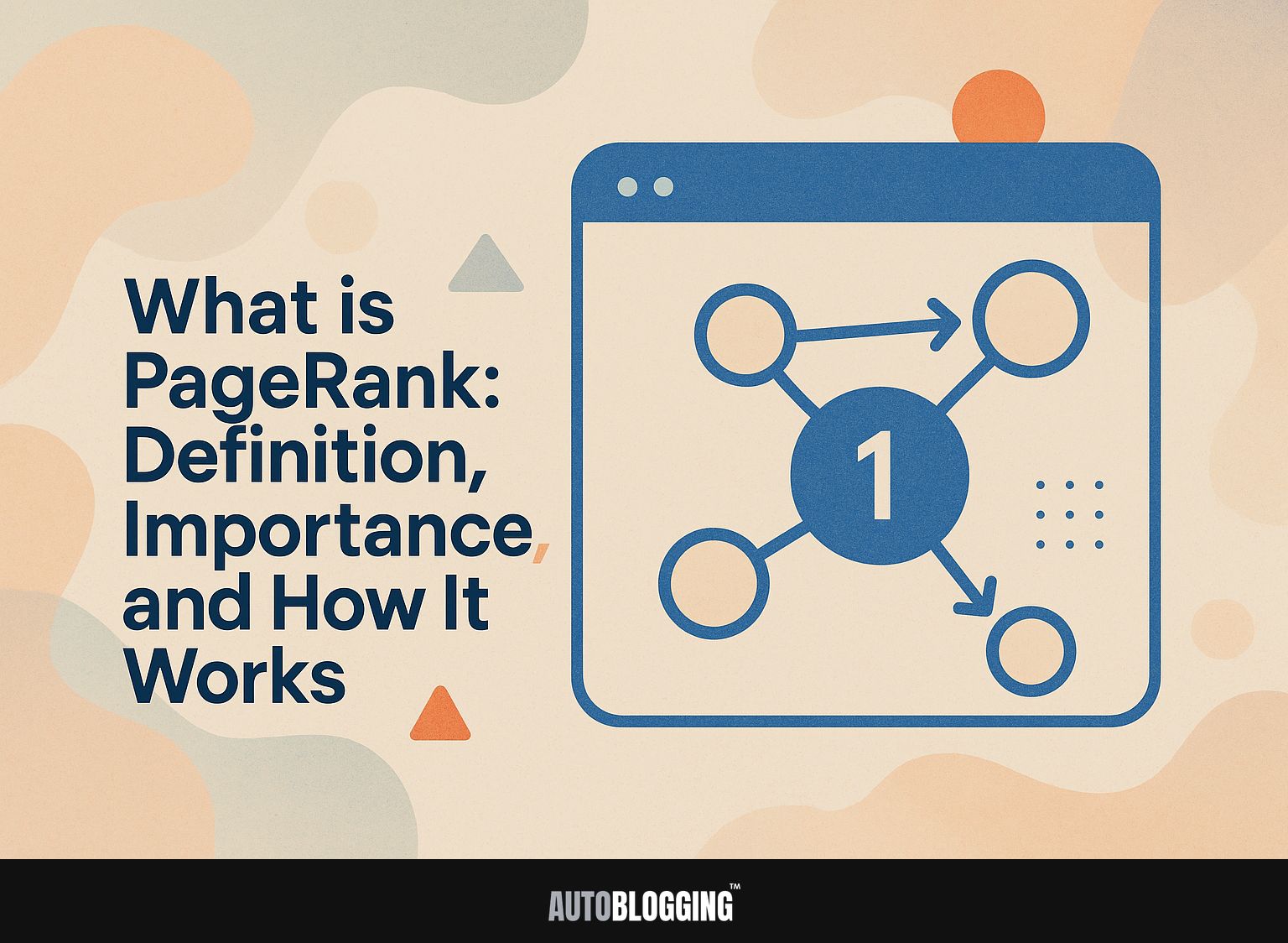
What is PageRank, and why does it matter in the digital world? Developed by Google co-founder Larry Page, PageRank is an algorithm that evaluates web pages based on their links, determining their importance and relevance. Grasping this basic idea is important for anyone wanting to improve their online presence. In this article, we will explain what PageRank is, why it matters for SEO, and how this strong algorithm affects how visible your website is.
Key Takeaways:
- PageRank is an algorithm used by Google to rank websites in search engine results based on the quantity and quality of links pointing to a website.
- The importance of PageRank lies in its significant role in SEO, influence on website traffic, and impact on online reputation.
- PageRank works by analyzing the link structure of the web and using a complex algorithm to determine the credibility and relevance of a webpage.
Contents
1. Definition of PageRank
PageRank is a metric developed by Google that assigns a numerical score to web pages based on the quantity and quality of links pointing to them. This score helps determine a webpage’s authority in search results, influencing its visibility.
Inbound links are important for PageRank; quality links from well-known sites greatly improve a page’s rating.
For example, a link from a renowned news outlet carries more weight than one from a less-known blog. Internal links within your own site also contribute, helping Google understand your content structure.
Maintaining a diverse and credible backlink profile is essential to improving your PageRank and overall search engine ranking.
2. Historical Background
In 1996, Larry Page and Sergey Brin developed PageRank while studying at Stanford University. This changed how search engines determine the significance of web pages.
Initially, PageRank analyzed links between pages, treating them as votes of approval.
By 1998, it became a core component of Google’s algorithm, enhancing search results significantly. The algorithm was modified in 2005 to display search results customized for each user. After that, it began monitoring user interactions with the results, making it more advanced.
PageRank has been used alongside factors like content relevance and trustworthiness to improve the accuracy of search results. This explains how SEO strategies evolve and what webmasters need to modify.
The Importance of PageRank
PageRank is important for SEO as it influences how many people visit a site, how the site is viewed, and where it shows up in search results.
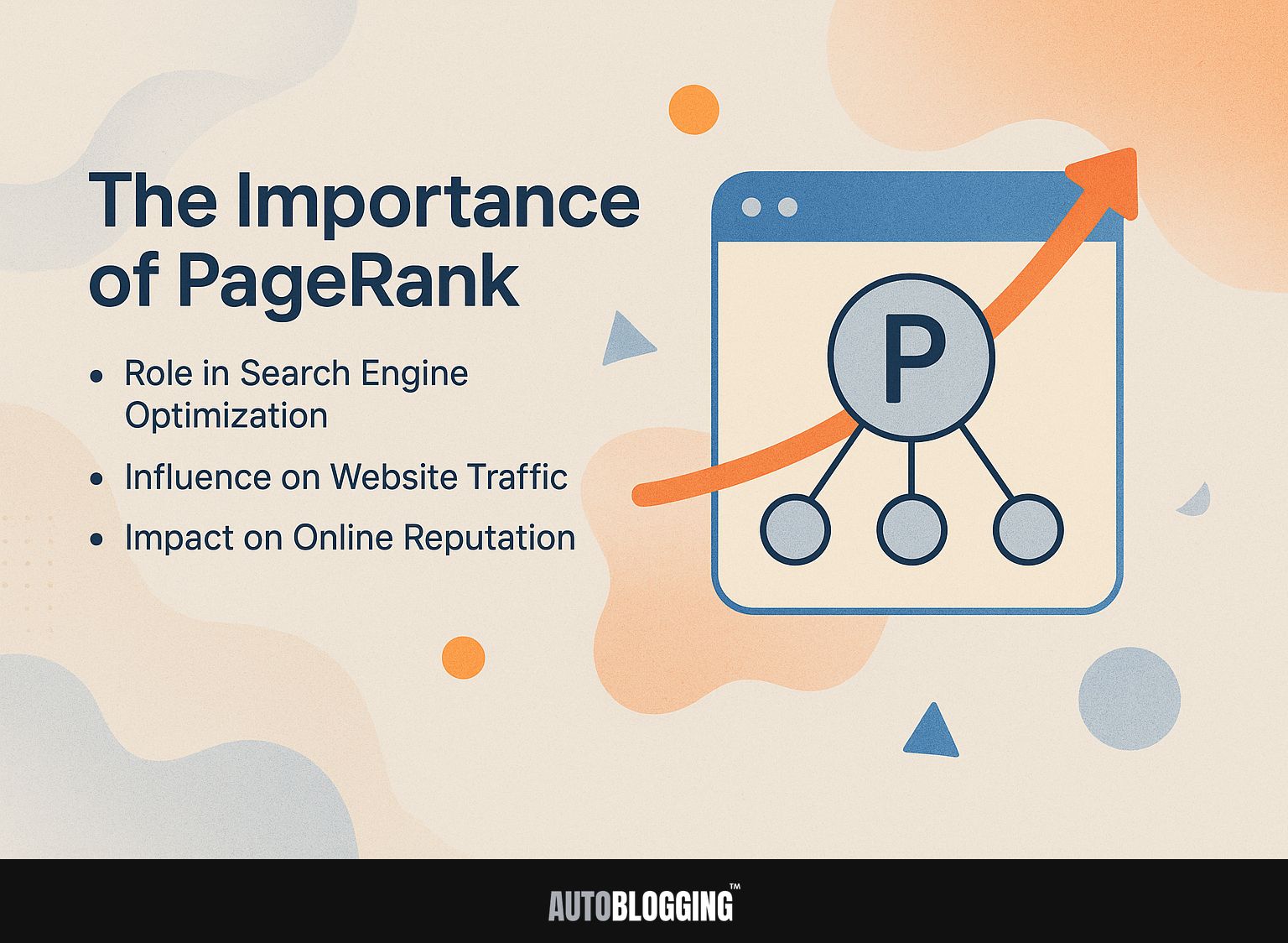
1. Role in Search Engine Optimization (SEO)
PageRank significantly affects SEO strategies, as higher PageRank scores lead to better visibility on search engine results pages (SERPs).
An important part of PageRank is that it evaluates how significant web pages are by looking at how many links they have and how good those links are.
To improve your website’s PageRank, concentrate on building links effectively. One way is to write articles for well-known sites in your field, and include links back to your content.
Use tools like Ahrefs or Moz to check competitor backlinks and find potential sites for outreach. Regularly engaging in relevant online communities can also organically generate links, improving your authority and search ranking over time.
2. Influence on Website Traffic
Websites with higher PageRank scores tend to attract more organic traffic, leading to increased user engagement and potential conversions.
For instance, a study by Moz revealed that moving from a PageRank of 3 to 4 could result in a 22% traffic increase. This increase happens because better positions on search engine results pages (SERPs) make your site more visible, resulting in more clicks.
To improve your PageRank, concentrate on getting quality backlinks and make your content fit well with relevant keywords. Use tools like Ahrefs to check your backlinks and Google Search Console to track your organic traffic.
By continuously improving these parts, you can draw more visitors to your site and motivate users to interact.
3. Impact on Online Reputation
A high PageRank score improves a website’s reputation on the internet, creating confidence among users and possible partners or advertisers.
Companies like Amazon and Wikipedia have effectively used their strong PageRank to strengthen their presence on the internet. For instance, Amazon uses its credibility to attract affiliate partnerships, driving significant traffic and sales through trust.
In the same way, Wikipedia’s reputation makes people trust it for reliable information, which helps it appear more in search results.
To improve your PageRank, focus on:
- Optimizing your content quality
- Building backlinks from reputable sites
- Ensuring mobile and user-friendly design
Tools like Moz or Ahrefs can help track your progress and identify areas for improvement.
How PageRank Works
PageRank uses a detailed formula to look at how web pages connect, determining how important and related the content is.
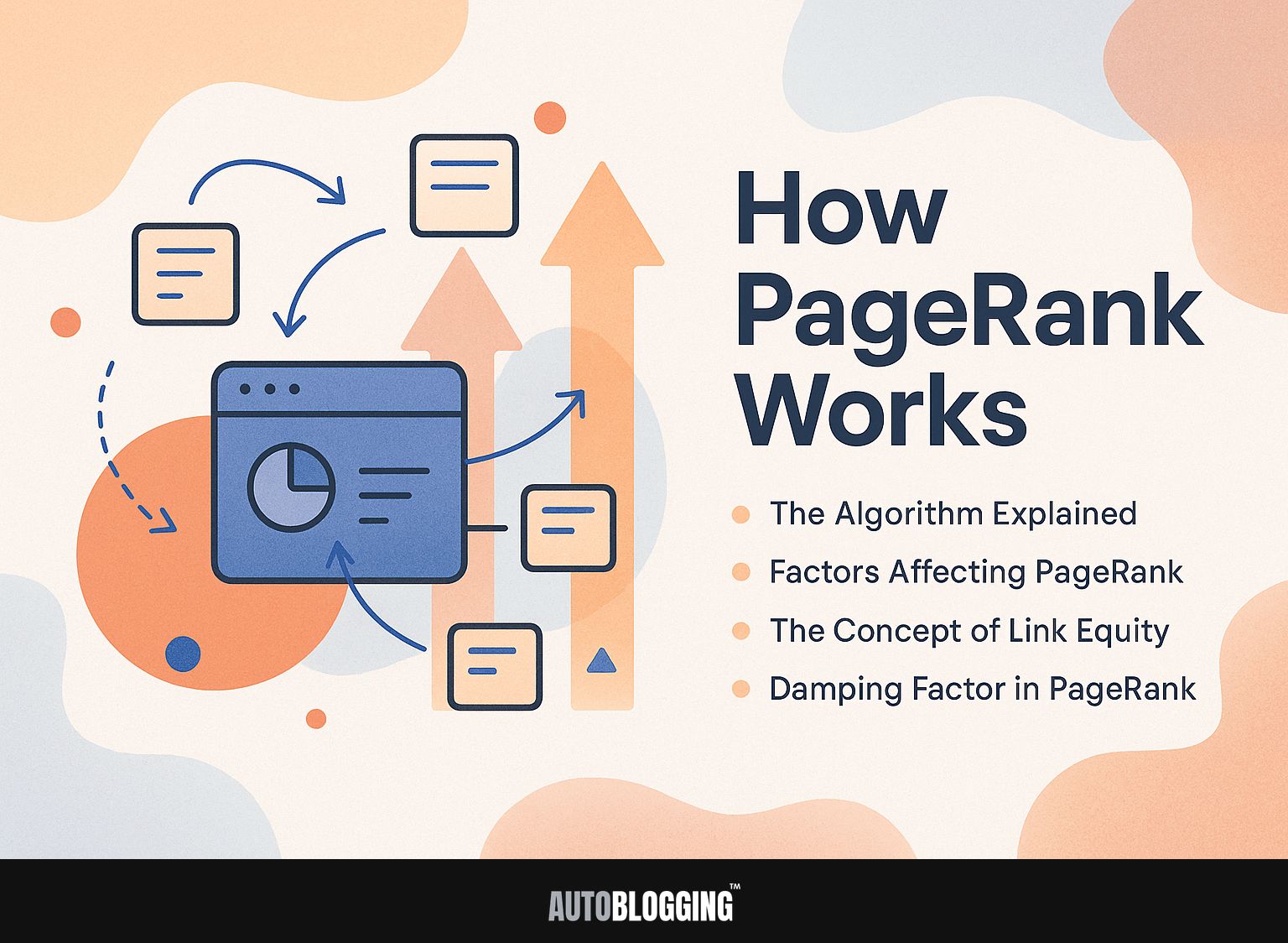
1. The Algorithm Explained
The PageRank algorithm functions by modeling a random process where users click on links from one page to another, much like a Markov chain model.
When a user clicks a link, they essentially take a step to another page, which can be represented mathematically. Each link between pages is assigned a value, and the number of links leading to a page helps determine its rank.
For example, if Page A links to Page B and Page C, the importance of Page A contributes to the score of B and C. This ongoing review of links develops a flexible rating system, where pages increase or decrease in importance depending on the number and quality of incoming links.
2. Factors Affecting PageRank
A website’s PageRank is affected by various elements such as how many backlinks it has, the quality of the sites that link to it, and the website’s general layout.
To improve your PageRank, concentrate on getting good backlinks from well-regarded sites in your field. Use tools like Ahrefs or SEMrush to analyze potential link sources and monitor your backlink profile.
Make sure your site is organized with a clear structure and easy-to-follow links. This helps search engines understand and list your pages correctly.
Following SEO best practices, like improving title tags and meta descriptions, helps achieve better visibility and higher PageRank as time goes on.
3. The Concept of Link Equity
Link equity is the value shared between pages via hyperlinks, which greatly affects a site’s total authority rating.
To maximize link equity, focus on strong internal linking strategies. For example, focus on linking important pages to newer or less-visited pages, as this can pass on significant value well.
Use clear, specific anchor text to improve connection with the content. Regularly audit your internal links and remove or update broken ones to maintain an effective flow of equity.
Tools like Screaming Frog or Ahrefs can identify link opportunities, ensuring your site’s structure boosts its PageRank and SEO results.
4. Damping Factor in PageRank
The damping factor in PageRank, usually set around 0.85, accounts for the probability that a user will stop following links at any point.
Mathematically, the damping factor is represented as 1 – d, where d is typically 0.85. This means there’s a 15% chance that a user will randomly jump to a non-linked page instead of following a link.
The presence of the damping factor prevents the algorithm from favoring sites with excessive link farms, thus ensuring a more equitable distribution of PageRank across the web.
Adjusting the damping factor correctly is important for link analysis, as it improves the accuracy of how a page’s link structure is valued, resulting in more trustworthy search engine rankings.
Calculating PageRank
PageRank can be found using simple methods or by using more complex processes that involve repeating steps and working with matrices.
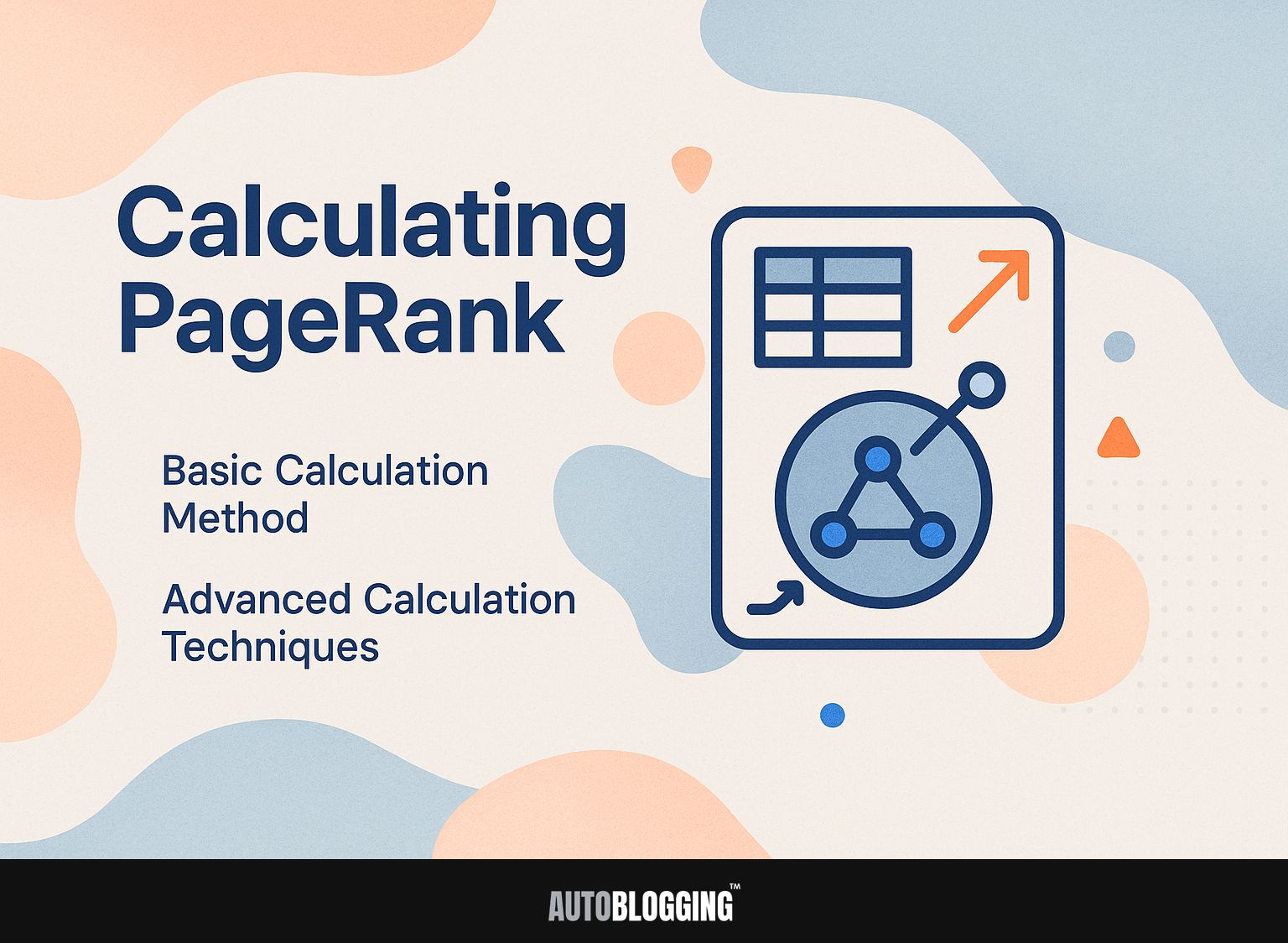
1. Basic Calculation Method
The basic method to calculate PageRank assigns a score based on the number of incoming links divided by the total number of outgoing links from a page.
To calculate PageRank, use the formula: PR(A) = (1-d) + d * (PR(T1) / C(T1) + PR(T2) / C(T2) +… + PR(Tn) / C(Tn)), where d is typically set to 0.85.
For example, if Page A has 5 incoming links (from pages B, C, D, E, and F) and it itself links to 2 pages (G and H), the PageRank can be calculated by assessing the PageRanks of B, C, D, E, and F divided by their respective outgoing links.
This repeating process goes on until the scores stop changing, showing how important each page is.
2. Advanced Calculation Techniques
Modern methods to figure out PageRank use repeated calculations, usually with matrix math, to work with big data sets effectively.
One effective way is to use Python with libraries like NumPy for working with matrices. Begin by constructing the adjacency matrix of your link structure, where each entry represents a connection between pages.
Apply the power iteration method: repeatedly multiply the PageRank vector by the stochastic matrix derived from your adjacency matrix until convergence is achieved.
This method can easily manage datasets with millions of links, making it ideal for studying the current web.
Limitations of PageRank
Even though PageRank is important, it has limits, especially when used alone to measure the quality and relevance of a page.
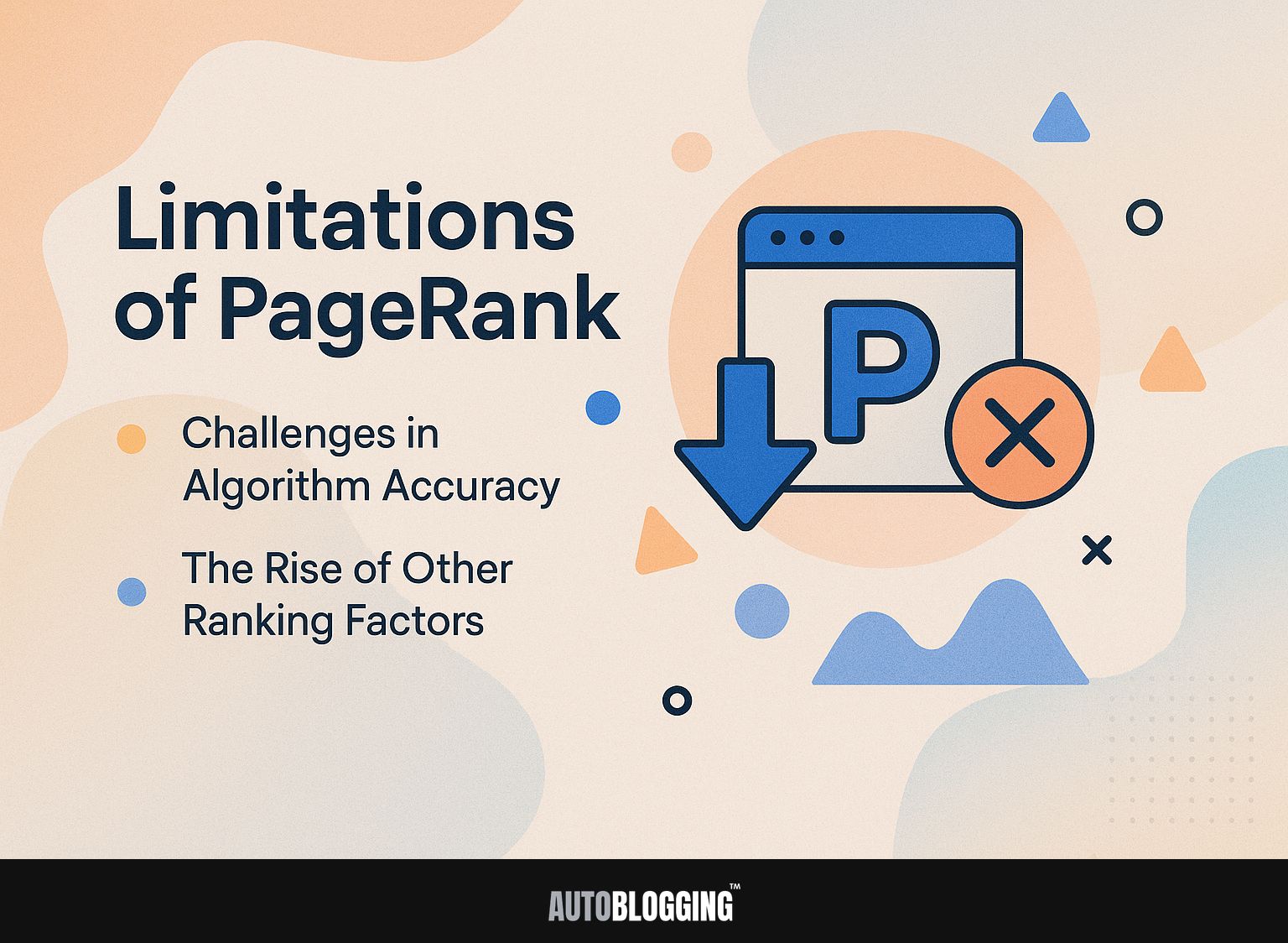
1. Challenges in Algorithm Accuracy
Challenges in PageRank algorithm accuracy include the potential for link manipulation and the oversimplification of web page quality.
Link manipulation tactics, such as buying backlinks, using private blog networks, and artificially inflating the number of inbound links, can distort PageRank and mislead search engines.
For example, purchasing links from poor-quality websites might give a short-term improvement, but it can result in penalties if found. The algorithm’s reliance on quantity over quality can undervalue legitimate high-content pages with fewer links.
To address these problems, Google regularly changes its algorithms to focus on how users interact with content, such as how long they stay on a page and how often they click on links, highlighting the need to create content that is useful and relevant.
2. The Rise of Other Ranking Factors
Other ranking factors, such as content relevance and user engagement, have gained prominence, challenging PageRank’s historical dominance in SEO.
Google’s E-A-T guidelines focus on the importance of high-quality content for ranking well. To improve E-A-T, frequently refresh your website with new, thoroughly researched articles supported by reliable sources. Consider incorporating user engagement metrics.
Tools such as Google Analytics can help you monitor bounce rates and session lengths. You can lower bounce rates by ensuring your content matches what the audience is looking for.
Boosting mobile speed so pages load faster significantly enhances user experience, which influences search rankings.
PageRank in Today’s SEO Landscape
In current SEO practices, PageRank is still important among various metrics used to assess online visibility and influence.
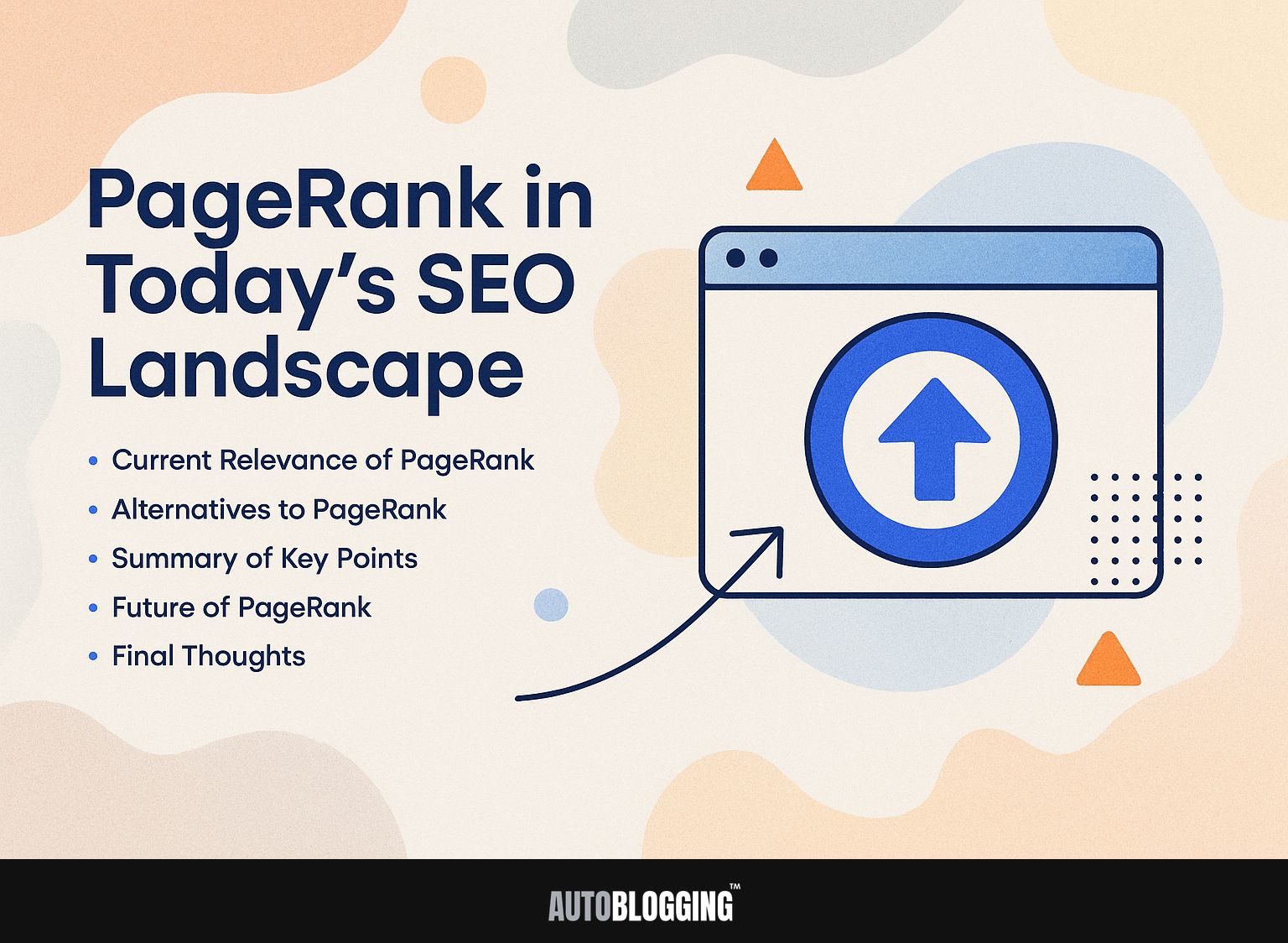
1. Current Relevance of PageRank
PageRank still matters, especially for analyzing link structure, even as Google’s algorithms change to include more elements.
Today, SEO experts emphasize the importance of link quality over quantity, viewing PageRank as a foundational concept.
For instance, Moz’s recent studies suggest that while PageRank is less visible in ranking factors, it still influences link equity distribution.
Tools like Ahrefs and SEMrush allow users to audit their backlink profiles, helping them identify high PageRank sites for link-building opportunities.
Knowing how to link pages within your website can improve how Google views your site’s importance. Regularly updating your internal links can greatly improve your site’s performance.
2. Alternatives to PageRank
Other options to PageRank have appeared, like authority scores from tools such as Semrush and Moz, which evaluate different SEO elements.
These tools offer metrics like Domain Authority (Moz) and Authority Score (Semrush), which combine link quality, traffic, and content relevance to gauge a site’s overall SEO strength.
For instance, Semrush’s Authority Score evaluates backlinks on a scale from 0 to 100, helping users identify high-potential domains for outreach.
Unlike other systems, Moz’s Domain Authority uses past information and checks for spam to provide similar information. These options provide a more complete view of a site’s performance than only using PageRank, as they take into account different elements that influence how search engines function today.
3. Summary of Key Points
Key points include the definition of PageRank, its historical significance, and its ongoing relevance in SEO practices today.
PageRank, developed by Larry Page and Sergey Brin, measures the quality and quantity of links to a webpage to assess its importance. In the past, it changed search engines by highlighting the importance of good backlinks.
Today, while Google uses many ranking factors, PageRank is still essential. To improve your SEO, concentrate on getting good backlinks from well-respected sites, use tools like Ahrefs or Moz to check your link profile, and regularly produce useful content that attracts organic links.
Grasping this principle can greatly improve your website’s visibility.
4. Future of PageRank
PageRank will probably update to align with new web rules and how people use the internet.
As search engines prioritize user intent and content quality, PageRank may begin incorporating factors like social signals and real-time engagement metrics. For instance, metrics from social media shares or user interaction statistics could become integral to assessing a site’s authority.
Machine learning algorithms can improve how links are judged, allowing search engines to understand context instead of just counting numbers. This change encourages website owners to focus on creating quality content and building genuine connections, emphasizing that ‘link building’ should become ‘relationship building.’
5. Final Thoughts
PageRank is still an important part of SEO, providing information about web links and helping improve web pages.
Knowing how PageRank works helps website owners get quality backlinks. Focus on contacting well-established websites in your area for guest blogging chances, which can help you gain important links.
Tools like Ahrefs and Moz can analyze your current backlinks and identify potential linking partners. Creating shareable content, such as infographics or detailed guides, attracts links.
Keep in mind, a solid internal linking plan improves your PageRank by showing search engines which pages are most important on your site.
Frequently Asked Questions
1. What is PageRank?
PageRank is a numerical value that represents the importance or popularity of a webpage on the internet. It was developed by Google co-founders Larry Page and Sergey Brin as part of their overall search engine algorithm.
2. Why is PageRank important?
PageRank is important because it helps search engines determine the relevance and credibility of a webpage, which in turn affects its ranking in search results. Pages with a higher PageRank tend to show up first in search results, making them easier for users to find and access.
3. How does PageRank work?
PageRank works by analyzing the links that point to a webpage. The more quality links a page has, the higher its PageRank will be. It also takes into consideration the PageRank of the pages that are linking to it, giving more weight to links from pages with a high PageRank.
4. What factors affect PageRank?
PageRank is affected by a variety of factors, including the number and quality of links, the relevance of the linking pages, and the PageRank of those pages. It is also influenced by the content and keywords on the page and how well it matches the search query.
5. Can I improve my website’s PageRank?
Yes, you can make your website’s PageRank better by producing good content, getting links from trustworthy sites, improving your website’s layout and organization, and using keywords well. You should regularly refresh and take care of your website to keep it relevant and useful for visitors.
6. How does PageRank differ from other ranking factors?
PageRank is just one of many ranking factors used by search engines to determine a webpage’s position in search results. Other factors include the relevance of the content, the age of the website, and the user’s location and search history. PageRank is unique in that it specifically measures the quality and quantity of links to a webpage.
